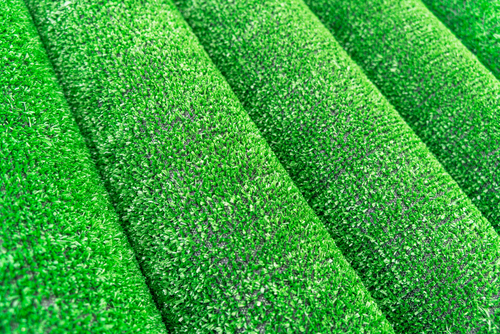How Do I Choose the Best Artificial Grass?
May 28
Looking to choose the finest artificial grass on the market? That probably means you’ve learned what you should put under artificial grass, that artificial grass is not harmful to your pets, and that artificial turf is not going to start smelling bad. And now you want some in your backyard?
That’s great. Artificial grass is too, but only if you choose the right kind for you. There are many products out there that do not cut the mustard when it comes to quality and long-term durability. You need to find an artificial turf installation service in San Diego that only deals in the finest materials possible. But first, let’s see what makes artificial grass good.
“Where can I find the best artificial turf installation service in San Diego?”
At Pacific Dreamscapes, where else? Not only will we provide you with artificial grass that ticks all the right boxes, but we’ll also provide top-quality installation services for your turf. We install only the finest artificial grass available on the market, and we do it quickly and efficiently. So, at these times when it’s difficult to escape to Point Loma for a couple of hours, why not think about giving your yard a fresh look? Contact us and let’s work something out!
What is artificial grass made of?
We could say that artificial grass is made from synthetic materials and be done with it. And, we wouldn’t be lying. It is called “artificial grass” after all. But we’re not going to do that. We’re not going to take the easy way out. What we are going to do is separate artificial grass into its basic components, and tell you what each component of artificial grass is made of. Like that? Yeah, we do too. So, let’s see what it’s made of!- The blades – This is what makes artificial grass look and feel like the real thing, so we have to know what the blades are made of. They’re made from polyethylene, which is a type of plastic. It lasts long, looks good, and feels great when you step on it!
- The thatching – Now, what’s this? Thatching? Well, the addition of thatching (talk about tough spelling) is what actually revolutionized artificial turf. This layer cushions the grass and provides additional support, making artificial grass feel as real as, well, real grass. Thatching is made of polypropylene.
- The cushioning and backing – These two components of artificial grass are most commonly made from either recycled plastic and rubber or polyester. You should think about having two backing layers, as it will make the blades fit more securely, as well as allow them to bounce back into the upright position more easily.
- The infill – Finally, it’s the infill that helps the backing keep the blades upright. It also provides some weight to the artificial grass, making it drain better. Infill can be made from rubber or sand. Other materials can be used, but these are the two most common ones.
What thickness of artificial grass is best?
The thickness of artificial grass depends on so many factors, that it is difficult to take them all into consideration. For example – do you plan on using your yard for kids to play at, or for neighbors to come to garden parties? Is your lawn going to be ornamental and with low traffic, or is it going to become a whole-family escape? Have you got any pets? You see, too many factors to consider, and it really is rather difficult to provide a perfect artificial grass thickness for every occasion. However, there are two types of artificial grass thickness and height that work best for all occasions, and the choice depends solely on your own preference on how you want your lawn to look:- The fresh-cut – If the look and feel of a freshly-cut lawn is something you would enjoy on a daily basis, then we suggest a pile height of 25 – 30 millimeters. This will make your lawn look as it’s just been cut all the time.
- The all-natural – If, on the other hand, you want your artificial lawn to have that natural look of grass being just a tad longer than as if it had been cut just this morning, we suggest a pile height of 30 – 38 millimeters. Anything longer than this and, depending on the material the artificial grass is made, you risk ending up with a flat-looking lawn.
What is the best artificial grass?
We’re not going to tell you “Right, this is it, THE best artificial grass, don’t buy anything else!”. It’s not something we generally like to do. However, we can provide you with a set of characteristics artificial grass should possess in order for you to consider buying it.- It should be able to withstand everyday use and be able to retain its appearance even with heavy traffic.
- It should look completely lush and utterly full. Looks are important too when it comes to artificial grass, don’t let anyone tell you otherwise.
- It should be extremely durable, which means you should look for as dense and artificial grass as possible.
- It should be heavy when you pick it up, because, as funny as it might sound – the heavier the artificial grass is, the better and more durable it is.
- It should be springy, which means that it will feel bouncy under your feet and that the blades bounce back into shape as soon as you step somewhere else.
- It should be weather resistant, meaning it should possess a UV protection certificate.
- It should be of a realistic color. Don’t go super green when buying artificial grass because it will end up looking, well, artificial.

